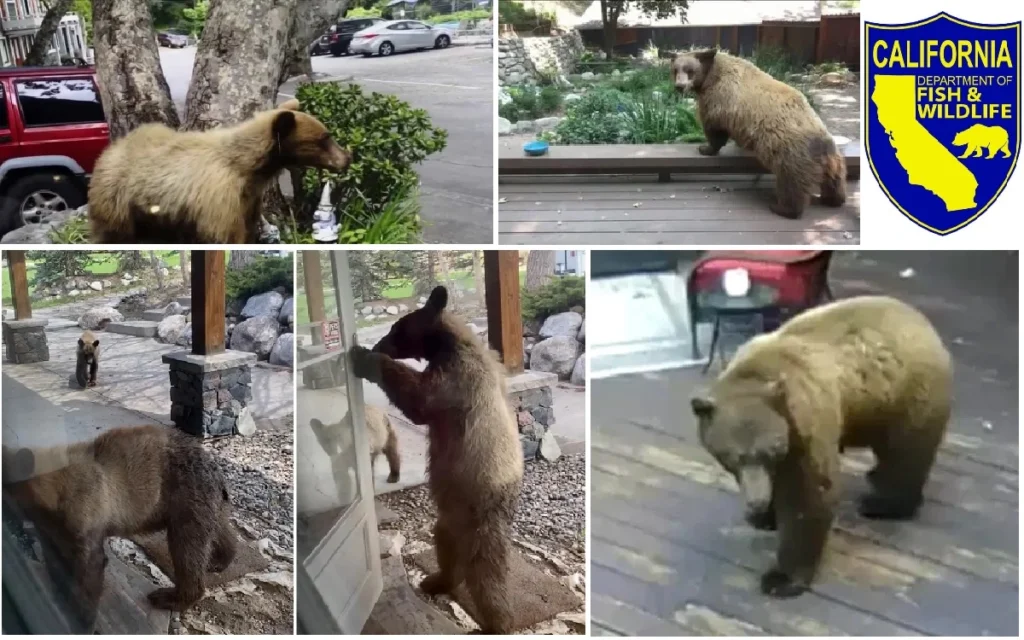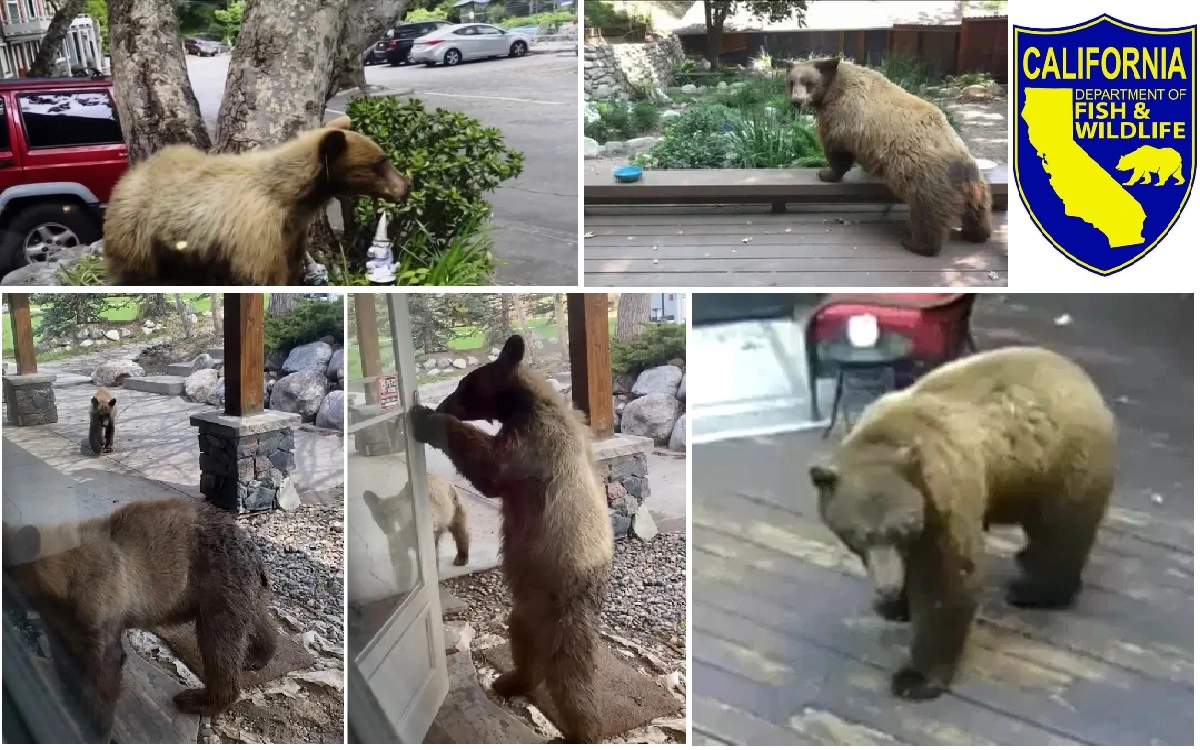|
Getting your Trinity Audio player ready...
|
As summer approaches in the Golden State, residents and visitors alike are finding themselves face-to-face with an unexpected neighbor: the American black bear. In a startling trend, reports of black bear encounters in California’s Urban Wilderness and suburban areas have surged by 30% in the first half of 2024 compared to the same period last year, according to data from the California Department of Fish and Wildlife (CDFW)[1].
California’s Urban Wilderness Sprawl Meets Wild Habitats
The primary cause of this uptick, experts say, is the ever-expanding human footprint.
As our cities grow and we encroach further into bear territory, these encounters are becoming more frequent,
explains Dr. Sarah Thompson, a wildlife biologist at the University of California, Berkeley[2]. She points out that suburbs in areas like Lake Tahoe, the Sierra Nevada foothills, and even parts of Los Angeles County are now bordering prime bear habitats.

This proximity has led to a series of incidents. In April, a black bear was spotted rummaging through garbage cans in a Pasadena neighborhood, causing a local school to go into lockdown[3]. Just last month, a bear wandered into a backyard in South Lake Tahoe, surprising a family having a barbecue[4].
It was surreal,
shares resident Mark Harding.
One moment we were grilling burgers, the next, we had an uninvited guest eyeing our food.
Climate Change and Food Scarcity
But California’s Urban Wilderness expansion isn’t the only factor. Climate change is altering bear behavior, according to a recent study by the Sierra Nevada Conservancy[5]. Warmer temperatures are affecting the bears’ hibernation patterns and the availability of their natural food sources.
Traditionally, bears would hibernate from late fall to early spring,
says Dr. Elena Gonzalez of the Conservancy.
But with milder winters, some bears are active for longer periods, which means they need more food[5].
Additionally, droughts and wildfires have reduced the availability of berries, nuts, and other bear staples, pushing them to seek food in human areas.
The Human Factor: Unintentional Invitations
Experts stress that while bear sightings are up, attacks remain rare. Most bears are simply looking for an easy meal.
Bears are opportunistic feeders,
says CDFW spokesperson Jack Nelson.
When they find unsecured trash cans, pet food left outside, or open compost bins, it’s like ringing a dinner bell.
This is where human behavior plays a crucial role. The CDFW has launched a statewide campaign,
Bear-Aware California,
to educate the public on bear-proofing their properties. Tips include using bear-resistant trash cans, removing bird feeders during bear season, and never intentionally feeding bears.
Conservation and Coexistence
Despite the challenges, there’s a silver lining. The rise in bear sightings indicates a healthy bear population, a testament to successful conservation efforts. Black bears were once hunted to near-extinction in parts of California. Today, their numbers have rebounded to an estimated 35,000 statewide[6].
The goal now is coexistence. In Mammoth Lakes, a town known for bear activity, local government and wildlife groups have collaborated on innovative solutions. They’ve installed bear-proof dumpsters, created a
bear hotline
for residents to report sightings, and even employed
bear whisperers
– trained professionals who use non-lethal methods to guide bears back to the wilderness[7].
It’s about respecting their space and adapting our behavior,
says Mammoth Lakes Mayor Jennifer Lawson.
These bears were here long before us. We need to learn to live with them, not against them.
Looking Ahead: Education and Adaptation
As summer unfolds and more Californians head outdoors, officials urge vigilance and respect.
Remember, we’re visitors in their home,
says Nelson. He recommends making noise while hiking to avoid surprising bears, and if you do encounter one, back away slowly without turning your back.
The rise in bear encounters is a complex issue, intertwining California’s Urban Wilderness development, climate change, and human behavior. But it’s also an opportunity for Californians to reconnect with the wild heart of their state. By adapting our practices and respecting our ursine neighbors, we can ensure that both humans and bears have a place in California’s future.
For More News Update Visit California News



